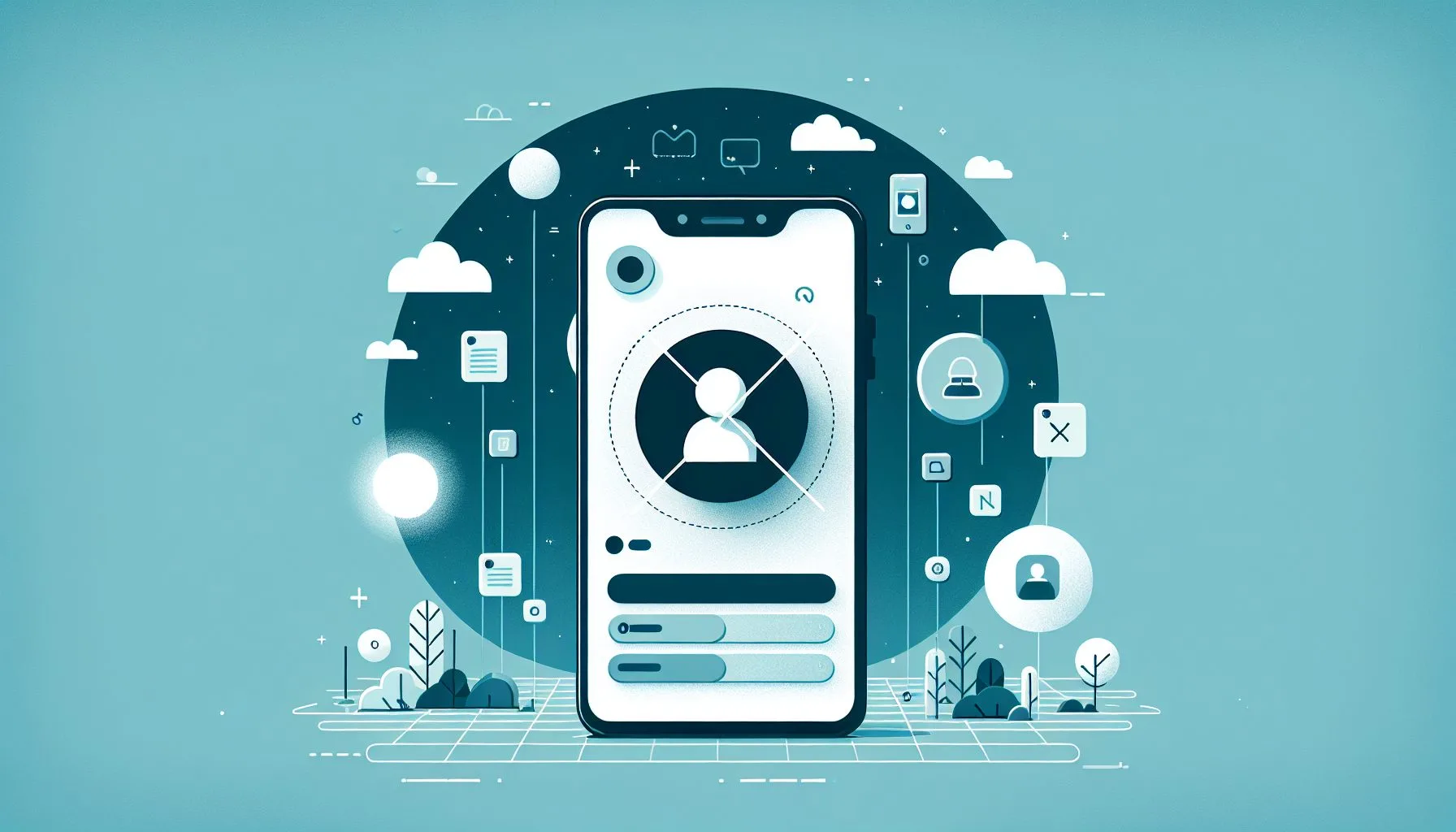Interesting Facts
If you’ve ever found yourself wondering who you’ve blocked on your iPhone or how to manage that list, you’re not alone. Blocking contacts or numbers can be a handy way to maintain peace of mind — whether it’s to avoid telemarketers, mute an annoying acquaintance, or steer clear of unwanted conversations. But after a while, the list of blocked numbers can grow, and it’s easy to forget who’s on it. Knowing how to check and manage your iPhone’s block list isn’t just about curiosity; it’s about keeping your communication channels clear and under your control.
Let’s take a deep dive into how you can view and manage your block list on an iPhone, including details on the latest iOS versions up to 2024. This is about more than just toggling a setting — it’s about understanding your phone’s features so you feel confident and secure in customizing your interaction with the world.
Where to Find Your Block List on iPhone
The first instinct might be to look directly in the Phone or Contacts app, but the truth is these settings are subtly tucked away inside the broader Settings app. The path is straightforward if you know where to look.
Start by opening the Settings app on your iPhone – it’s that familiar gear-shaped icon. From there, scroll down to find the Phone option and tap it. Inside the Phone settings, you’ll find an entry labeled Blocked Contacts or Blocked Numbers depending on your iOS version. When you tap this, you’re presented with a list of all the phone numbers, email addresses, or contacts that you have blocked.
This list can include numbers you manually blocked, or in some cases, numbers blocked through a third-party app integrated into your iPhone’s blocking system. It’s a comprehensive glance at who you’ve effectively muted on your device.
Knowing exactly where to find this list means you can quickly check it anytime a question pops into your head: “Did I block this person already?” or “Who exactly won’t be able to reach me?” For more details on managing such settings, Apple’s official support page can be highly informative.
Why Managing the Block List Matters
You might think that once you block someone, it’s set and forget. But here’s an everyday reality: circumstances change. Maybe you blocked a number during a rough patch with someone, but now you want to allow contact again, or perhaps you want to make sure that an accidentally blocked contact is given a second chance. Regularly reviewing your block list prevents unwanted surprises – like missing a call from an important person by mistake.
Additionally, some people might unknowingly or accidentally get blocked – perhaps because of a wrong tap or confusion with the interface. Clearing up your block list keeps your phone’s communications clean and intentional.
Reflect on the times you’ve missed an unexpected call or message and wondered why. It could simply be that the number was still on your blocked list, quietly silenced. Managing it thoughtfully is like trimming back a tangled garden, so the right plants can grow and unwanted weeds disappear.
How iOS 18 Changed the Way We Manage Blocked Contacts
With the introduction of iOS 18, managing blocked contacts became more integrated, especially with the Messages app. Beyond just phone calls, blocking also affects messages – iOS lets you filter unknown senders so texts or iMessages from people not in your contacts go into a separate list.
You can access this filter by opening the Messages app, tapping on the filter option in the top-left corner under Filters, and then viewing messages from unknown senders. Within this interface, there’s now a more user-friendly way to manage blocking, including unblocking numbers or adding new ones directly while sorting through your messages.
This shift is part of Apple’s subtle move towards blending call and message blocking into a more seamless experience — it’s no longer something you have to hunt for separately, but rather a comprehensive tool within daily communication apps.
Imagine receiving a message from an unknown number and wondering whether to block it. You can now quickly decide right at that moment without leaving the Messages app. It’s a small but meaningful improvement that puts more control right where communication happens.
Adding and Removing Numbers from the Block List
To block a new number, you can do it any time you get a call or message from an unwelcome number. Simply tap on the contact or number in either the Phone app’s Recent Calls or the Messages app, scroll down to the bottom, and select Block this Caller. It’s a quick process, but it’s just as important to know how to remove someone from this list if you want to reconnect.
Going back to the Settings > Phone > Blocked Contacts list, just swipe left on the contact or number you want to unblock, then tap Unblock. This removes their number from the blocked list, and from now on, calls or messages from them will come through as usual.
Sometimes it’s easy to forget you blocked someone in a moment of annoyance — a quick unblock can open the door to renewed conversations or mended relationships. Knowing how to take these actions smoothly helps keep communication heartfelt, not mechanical.
A Broader Look: Blocking Beyond Phone and Messages
When it comes to blocking on the iPhone, the landscape doesn’t stop at calls and texts. FaceTime has its own blocking system that syncs with your blocked contacts list. Likewise, some third-party communication apps respect the iPhone’s system-wide block list, or offer their own blocking features that work in parallel.
It’s valuable to remember that blocking isn’t a one-size-fits-all feature; it works at several layers, from phone calls to iMessages, FaceTime calls, and even emails if you’ve set up blocking in the Mail app.
For example, if you’ve set up mail blocking rules in the Mail app, emails from blocked senders are sent directly to trash or filtered out. Though not exactly the same list as phone blocks, this shows how Apple aims to give you control over multiple communication channels, all woven into your iPhone experience.
Considering this, regularly reviewing your block lists across apps can help ensure your boundaries are consistent — and that no unwelcome interruptions slip through cracks in one area or another.
Practical Scenarios for Checking Your Block List
You might be asking yourself, “When would I really need to check this list?” Beyond the obvious curiosity, here are a few moments when it can be personally useful:
Imagine you’re expecting a call from an important number but it’s not coming through. Discovering you accidentally blocked that number can save an embarrassing or stressful misunderstanding.
Or perhaps you’re trying to keep your phone uncluttered, and you decide to review whom you’ve blocked over the years — maybe it’s time to unblock a few people or tighten up the list.
Sometimes, privacy concerns or changing social dynamics require a fresh look. Maybe you once blocked an unknown number, but now you realize it was a legitimate contact. Taking the time to check your block list gives you back control.
Moreover, if you share your phone with family members or pass it on temporarily, checking the block list ensures nobody is being unfairly silenced — it’s a simple step towards transparency.
Settings Beyond Blocking: Silencing Unknown Callers and Message Filtering
Blocking is just one piece of the puzzle. The iPhone offers other features like Silence Unknown Callers, which sends all calls from numbers not in your contacts straight to voicemail, and Filter Unknown Senders in Messages.
These features serve a similar purpose in reducing disturbances while giving you choice and flexibility. If your block list keeps growing cumbersome, toggling these settings can offer a broader shield without needing to micromanage individual numbers.
For instance, activating Silence Unknown Callers means only people you’ve saved or called before can ring your phone, turning down the volume on random sales calls or spam. At the same time, essential voices still find their way through.
Similarly, Filter Unknown Senders keeps your messages inbox focused on the people you actually know, pushing suspicious or unexpected texts into a separate tab where you can consider them at your leisure.
Thinking of these tools as a layered defense helps keep your digital space calm without feeling overwhelmed by the task of blocking every nuisance number one by one.
Common Questions About Block Lists on iPhone
Can I see calls or messages from blocked numbers?
No. Once blocked, calls from those numbers never ring your phone, and their messages don’t appear in your regular inbox. They are essentially invisible, which is the goal but can sometimes lead to doubts about what’s been blocked or missed.
Does blocking delete contacts?
Blocking doesn’t remove a contact from your address book; it only blocks their communication. Your contacts list remains intact.
Can blocked contacts leave voicemails?
Blocked callers can leave voicemails, but they are placed in a separate “Blocked Messages” section in your Voicemail tab, and you won’t get a notification.
Will blocking someone on my iPhone block them on other devices?
If you use iCloud and have call blocking enabled for syncing, the block list can carry across your iPhone, iPad, and Mac. This keeps the experience consistent across devices linked to your Apple ID.
A Thought on Communication and Boundaries
In the end, blocking on an iPhone is more than a technical feature — it’s a tool for creating healthy boundaries with the people around you. We all need space sometimes, and our phones should respect that. Knowing how to check the block list and manage it thoughtfully gives us back the power over our time and peace.
It’s funny how something as simple as a block list can reflect so much about our lives — who matters, who we’ve had tensions with, and who needs our attention or silence. Taking a moment to look at your block list might feel like a small task, but it’s really about caring for your own well-being.
It might also inspire you to consider how you communicate your boundaries in real life — if you can confidently manage your digital walls, can that courage spill over into setting healthy limits in everyday relationships?
Final Thoughts
Checking and managing your block list on iPhone is straightforward once you know where to look: it lives under Settings > Phone > Blocked Contacts, with additional options in the Messages app starting from iOS 18. It’s a quiet but powerful feature, letting you decide exactly who can reach you. For detailed instructions, refer to Apple’s official guidance on blocking calls and messages.
If you haven’t peeked at your block list in a while, consider making it a part of your regular phone routine. Just like cleaning out your closet or organizing your workspace, it’s a small habit that keeps your digital life uncluttered and intentional. And in a world that often feels too loud, isn’t that a welcome relief?
Remember: Your phone is your space. You get to decide who’s invited and who isn’t — and that’s a comforting thought to carry with every call and message you receive. Taking control of your block list is a small but meaningful step toward a calmer, clearer communication life.
How to check block list on iPhone?
Can I see calls or messages from blocked numbers?
No. Once blocked, calls from those numbers never ring your phone, and their messages don’t appear in your regular inbox. They are essentially invisible, which is the goal but can sometimes lead to doubts about what’s been blocked or missed.
Does blocking delete contacts?
Blocking doesn’t remove a contact from your address book; it only blocks their communication. Your contacts list remains intact.
Can blocked contacts leave voicemails?
Blocked callers can leave voicemails, but they are placed in a separate “Blocked Messages” section in your Voicemail tab, and you won’t get a notification.

